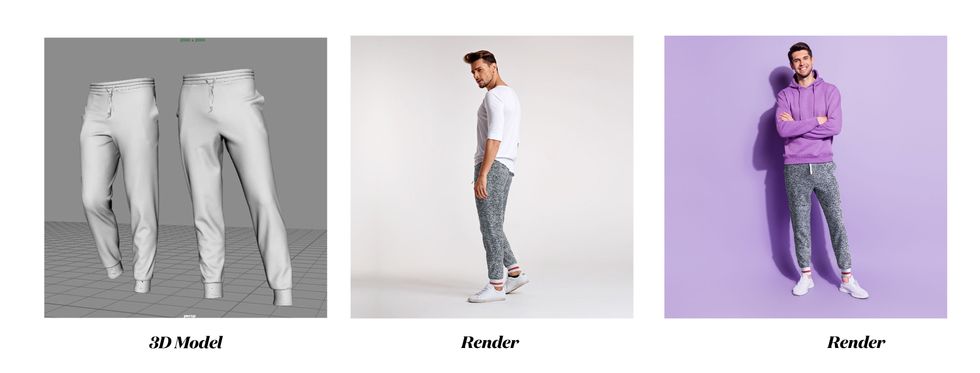YouTube is not to be overlooked.
When it comes to media and discourse, it can feel like the video sharing platform doesn’t get as much attention as social media platforms like Facebook, Instagram and TikTok. Yet the video platform is an established engine that attracts over 2 billion monthly logged-in users. It has its own celebrities, and its own genres of content. At this point, the Google-owned platform feels like it’s built into the infrastructure of the internet.
With this scale, it’s also a place where creators are building big audiences, and building relationships with them in the process. According to a study released last year by Publicis Groupe, YouTube and Talk Shoppe, 89% of viewers said that YouTube creators give recommendations they can trust. The combination of authentic voices and volumes of available information means that YouTube can be a home for discovery of new products.
With the growth of ecommerce in recent years, the platform’s leadership has shown increasing interest in creating ways to not only find new items, but also to buy them. With success, ecommmerce on YouTube could be an avenue for creators to earn additional income, and a new channel for brands to reach consumers.
Shopping is getting one of its most visible boosts on YouTube to date through a series of new features that were announced on Tuesday. These include new shopping tools, a more prominent place for them within the platform and a partnership with Shopify that brings stores inside YouTube.
For users, YouTube said it will create a new shopping destination within its explore tab that will feature shoppable content. This will be initially available next week in the US, Brazil and India, while other countries will roll out next year.
YouTube is adding new tools to create such content. It is opening up live shopping features to all creators, including the ability to tag products for a livestream. It is also adding a shopping tab within YouTube Studio where creators can manage how products are tagged and where they appear on a channel.
At the same time, it will be easier for brands and creators to bring their products into the platform, and enable checkout so a purchase can take place without leaving YouTube. A new partnership with Shopify will allow creators and merchants to link a Shopify store to their YouTube channel, and feature the available products.
By connecting their Shopify store, merchants will be able to display products with fully up-to-date details, including removal of a product that sells out. In turn, they will be able to track performance of live and on-demand videos from their Shopify admin.
When it comes to integrating these products into content, YouTube Shopping on Shopify will allow merchants to sell products on YouTube through livestreams. Another option is to sell them on pre-recorded videos that display a curated list of products, displayed on a “shelf” that sits below a video. Through this partnership, YouTube is also adding a store tab where merchants can display all of their available products.

A Shopify store on YouTube. (Courtesy image)
On a fundamental level, Shopify said the partnership is about connecting content and commerce. In the space between the two, “Content creators are selling goods and building fully realized brands, and D2C merchants are creating content as a way to find and engage with new customers,” Shopify writes in its announcement.
For brands, integrating a Shopify store with YouTube can create an easier way to connect that engagement with a purchase. Creators, too, can access new tools to sell. That could make Shopify more appealing for individual creators, a group that the ecommerce platform has been working to serve more broadly in recent months with releases like a link-in-bio tool called Linkpop and the acquisition of influencer marketing platform Dovetale.
“For years, creators have built businesses around their YouTube content, often extending their entrepreneurship into building their own brands, but it hasn’t been as seamless to reach their audience with these products directly on YouTube,” said David Katz, VP of shopping product at YouTube, in a statement. “We’re excited to partner with Shopify to help creators easily bring their stores front and center for their communities on YouTube, who are increasingly turning to them to shop.”
The rollout comes after months of buildup. Earlier this year, leaders teased more growth in ecommerce. Since then, it made content shoppable from live events like its Beauty Festival and Coachella. In June, it partnered with Glossier to launch the beauty brand’s No. 1 Pencil eyeliner. Through the Shoppable Shorts Challenge, every recorded short that used a hashtag specific to the eyeliner was made shoppable with a link to the product. The latest release puts tools directly into the hands of creators.
Tuesday’s launch also brings a focus on live shopping. The QVC-style sessions that combine livestreaming hosts and ecommerce tools have been at the center of forecasts about YouTube’s shopping push and the evolution of online shopping as a whole. YouTube’s video-based format and tools lend themselves to livestreaming. Now, all creators will have access to tools that can bring products and checkout to those live videos. With the Shopify integration in place, users will be able to see a variety of products on a livestream, and complete the purchase within the platform. This opens up a host of potential opportunities: Creators could sell their own products, or partner with brands. Or, brands could stand up their own live shopping channels on YouTube.
Still, it doesn’t mean live shopping has officially arrived, nor is YouTube the only platform working on the strategy. With live shopping already popular in China, brands and retailers in the US including Walmart have been experimenting more heavily with live shopping over the last year, both through social media and new platforms that have launched to help brands run their own experience. During Prime Day, Amazon made its Amazon Live platform a centerpiece of its effort to reach customers, while eBay recently debuted a collector-centered live experience of its own. However, it has yet to reach wide adoption. Recently, the Financial Times reported that TikTok shelved plans for a US and European expansion of its own livestreaming feature after a UK trial was met with low sales and viewership. (A TikTok spokesperson told Fashion United that expansion remained a “long-term goal” of the social media service).
At the heart of all these moves are questions about what approaches brands should take, and what will resonate with consumers.
Given this still-in-development phase, YouTube’s expansion will be closely watched as a barometer of not only the viability of live shopping on its own platform, but also in North America as a whole.
And while live shopping is getting the top billing, it’s worth remembering that YouTube’s shopping features also allow for the creation of shoppable content both in on-demand videos and the addition of a store to the platform itself.
The video platform and Shopify are providing the tools for creators, who will now put them to work with their unique audiences and product offerings. Don’t be surprised if the YouTube shopping playbook that ends up working looks different than what’s envisioned today.









 A Hexa 3D rendering (Courtesy photo)
A Hexa 3D rendering (Courtesy photo)



